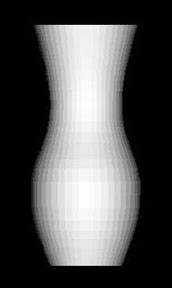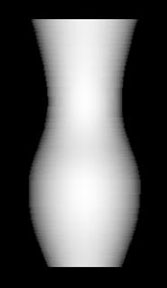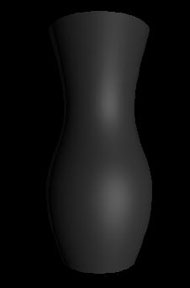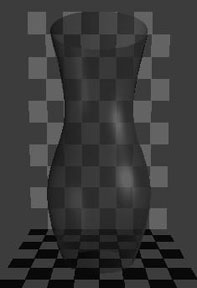Above about shading technique.

This vase has been modeled as a symmetrical pattern of vertically-oriented surfaces - tiny flat patches which approximate the round shape of the vase. In this image, each tiny surface is shaded separately with a different gray value based on its orientation to the light source.

By introducing a technique called Gouraud shading, we can smooth out the appearance of the vase and hide the individual surfaces from view. The shading is varied on each surface in proportion to values calculated at the edges and from neighboring surfaces.

Phong shading improves the apparent realism of the rendering still further by introducing highlights. The way light reflects from real surfaces depends on how shiny the surface is and on the angle you are looking from. Most surfaces are not shiny, but have a more dull or "matte" or "diffuse" appearance.
Can you tell where the light is shining from? The surface of this vase is just shiny enough to reflect some light directly to the viewer at certain angles, but around the sides the appearance is much duller. Light hitting the vase at flatter angles is scattered more evenly in all directions.

In this last image the shading technique has been extended to let some light pass through the vase - for transparency. Note that the reflection highlights are still there, even if they are less visible.
These shading techniques (and more) have all been incorporated into the generalized rendering technique called ray tracing.
No comments:
Post a Comment